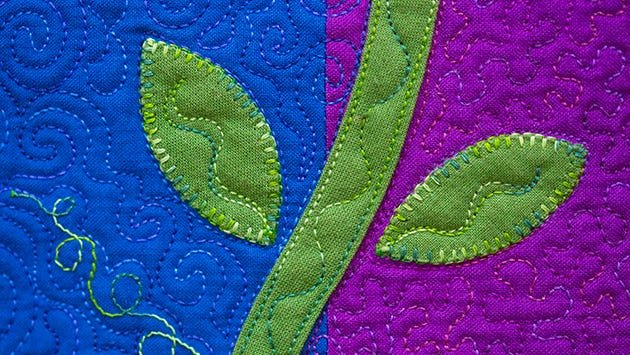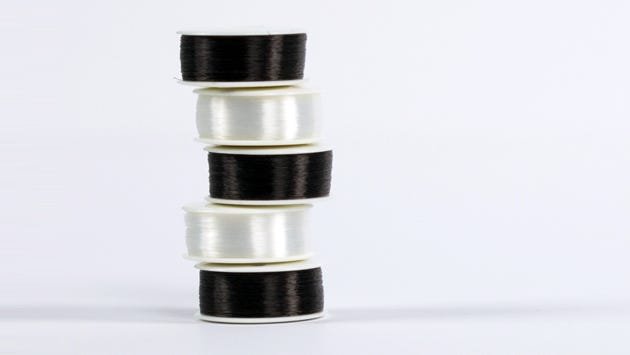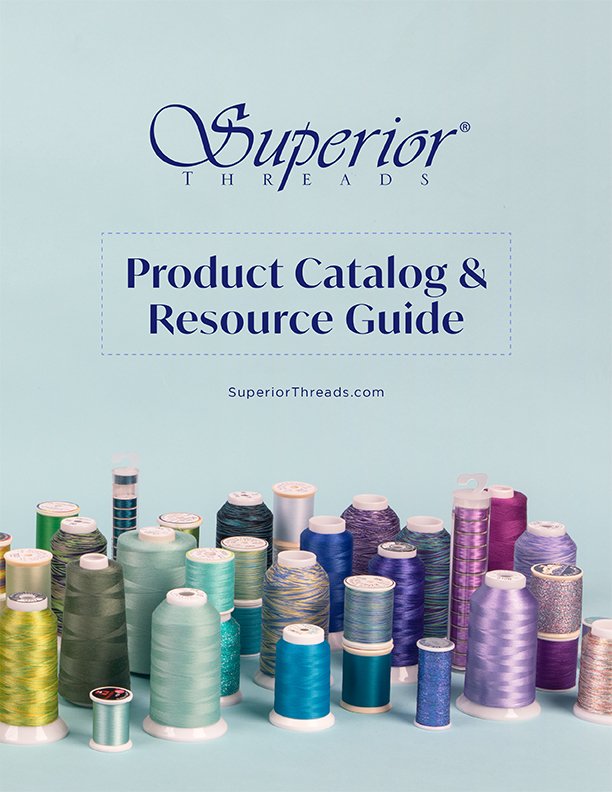Superior Education
NYLON THREADS
- MONOFILAMENT POLYESTER
- FUSIBLE NYLON
- INVISIBLE APPLIQUE
Why don't we recommend quilting with nylon threads?
When most people think of nylon thread, they think of the clear, fishing line-type thread used in hemming pants. Nylon monofilament thread has been used in the sewing industry for decades and was the primary thread for hemming and invisible stitching until a better option came around, polyester monofilament thread.
We only sew with nylon thread in two specific scenarios:
- Bonded nylon sewing thread for upholstery and industrial sewing applications. This thick thread is coated with a special resin that enhances its strength and abrasion resistance. Have you noticed thick thread on leather couches or decorative pillows? It's most likely bonded nylon. Bonded bylon is not a quilting thread and it's not designed to be used in your home machine or longarm machine.
- Fusible thread, such as Charlotte's Fusible Web for applique and temporary basting applications.
Charlotte's Fusible Web melts when exposed to heat. Wind it onto a bobbin, sew with MonoPoly as your top thread and outline your applique pieces. When you're ready to place your applique shapes onto the backing fabric, place your iron on top of the shape and leave it for 7-10 seconds. When you lift your iron up, the bobbin thread (fusible thread) will have melted and the MonoPoly can easily be pulled away. You now have a temporary adhesion for your applique shapes without using stiff fusible webbing or fusible interface. Fusible thread leaves your shapes and quilt flexible. Finish the applique shape with a decorative satin or blanket stitch.

The leaves on this quilt were placed with fusible thread

MonoPoly Prewound Bobbins
The difference between Nylon and Polyester
Nylon thread should not exist in your quilting or sewing supplies unless you want the thread to melt. As strange as this sounds, this is very true. Nylon threads, whether they are woollie-type threads which are used in sergers or invisible monofilament threads, have a very low melting temperature, discolor or "yellow" over time, and go brittle. Polyester threads are much better to use than Nylon threads.
Our fusible thread is made of Nylon, specifically because its intended purpose is to melt. MonoPoly is an invisible polyester thread that is similar in appearance to invisible nylon threads on the market, but has many advantages. Polyester threads exist in both the woollie-type for sergers, like Polyarn and as an invisible monofilament, like MonoPoly. Polyester fibers have a high heat tolerance, will not discolor, or turn yellow over time, may be ironed and are dryer safe on medium heat. For this reason, we always use a polyester equivalent of a nylon thread. The costs are identical and the benefits of polyester ensure a much better experience.
One more thing to check: If your monofilament thread is labeled polyamide, that is not polyester, but the chemical name for nylon. It's pretty tricky to have print polyamide on a thread label. Don't be fooled. Stick with polyester threads unless you want your nylon threads to melt, then choose a nylon fusible thread.

 View Our Product Catalog
View Our Product Catalog